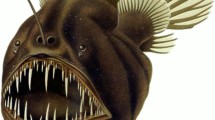Abstract
Several problems, in particular the ‘travelling salesman’ problem1 wherein one seeks the shortest route encompassing a randomly distributed group of cities, have been optimized by repeated random alteration (mutation) of a trial solution followed by selection of the cheaper (fitter) solution. Most non-trivial problems have complicated fitness functions, and optimization tends to become stuck in local fitness maxima. A recently introduced strategy to escape (simulated annealing) involves accepting unfavourable mutations with finite probability1–3. Independently, there has been interest in genetic strategies which overcome the problem of fitness maxima in biological evolution4–6, and several authors have applied biological elements to optimization7,8. Here we use computer algorithms to investigate new strategies for the 64-city travelling salesman problem, which combine conventional optimization or ‘quenching’ with biological elements, namely having a population of trial solutions, helping weaker individuals to survive, and an analogue of sexual crossing-over of genes. The new strategies were faster and gave better results than simulated annealing.
Similar content being viewed by others
References
Kirkpatrick, S., Gelatt, C. D. Jr & Vecchi, M. P. Science 220, 671–680 (1983).
Vanderbilt, D. & Louie, S. G. J. Comput. Phys. 56, 259–271 (1984).
Smith, W. E., Barrett, H. H. & Paxman, R. G. Opt. Lett. 8, 199 (1983).
Dobzhansky, T., Ayala, F. J., Stebbins, G. L. & Valentine, J. W. Evolution, 165–191 (Freeman, San Francisco, 1977).
Kourilsky, P. & Gachelin, G. La Recherche 155, 642–653 (1983).
Dover, G. A. BioScience 32, 526–533 (1982).
De Jong, K. IEEE Trans. Syst., Man, Cybern. 10, 566–574 (1980).
Holland, J. H. Adaption in Natural and Artificial Systems (University of Michigan, Ann Arbor, 1975).
Darwin, C. On the origin of Species 1st edn (facsimile Harvard University Press, 1964).
Stanley, S. M. The New Evolutionary Timetable, 72–109 (Harper and Row, London, 1981).
Perlmutter, R. M. et al. Adv. Immun. 35, 1–37 (1984).
Kaartinen, M., Griffiths, G. M., Markham, A. F. & Milstein, C. Nature 304, 320–324 (1983).
Dyson, F. J. Disturbing the Universe, 218–224 (Pan, London, 1981).
Feyerabend, P. Against Method (NLB, London, 1975).
Kuhn, T. S. The Structure of Scientific Revolutions 2nd edn (University of Chicago Press, 1970).
Ackley, D. H., Hinton, G. E. & Sejnowski, T. J. Cogn. Sci. 9, 147–169 (1985).
Hopfield, J. J. Proc. natn Acad. Sci. U.S.A. 79, 2554–2558 (1982).
Holland, J. H. Progress in Theoretical Biology Vol. 4 (eds Rosen, R. & Snell, F. M.) 263–293 (Academic, New York, 1976).
Author information
Authors and Affiliations
Rights and permissions
About this article
Cite this article
Brady, R. Optimization strategies gleaned from biological evolution. Nature 317, 804–806 (1985). https://doi.org/10.1038/317804a0
Received:
Accepted:
Published:
Issue Date:
DOI: https://doi.org/10.1038/317804a0
- Springer Nature Limited
This article is cited by
-
Highly feasible, energy-minimizing and time window-guaranteeing last-mile delivery routes generation based on clustering and local search considering package densities
Korean Journal of Chemical Engineering (2023)
-
Fingerprint inspired advanced end-effector and its applications
Friction (2022)
-
Dıscrete socıal spıder algorıthm for the travelıng salesman problem
Artificial Intelligence Review (2021)
-
New crossover operators using dominance and co-dominance principles for faster convergence of genetic algorithms
Soft Computing (2019)
-
Common Intervals of Multiple Permutations
Algorithmica (2011)





